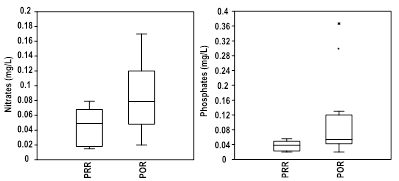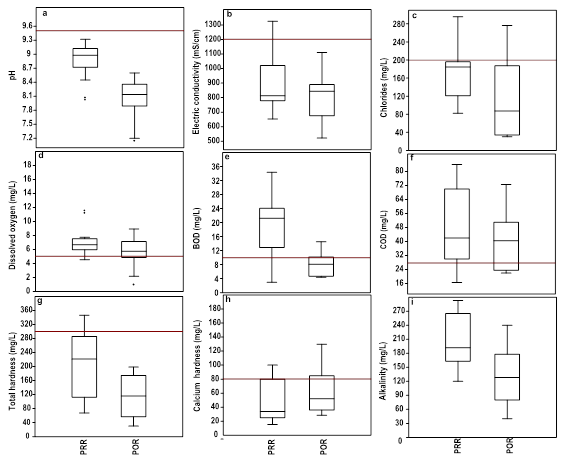1Energy and Wetlands Research Group, 2Centre for Ecological Sciences, 3Indian Institute of Science, Bangalore – 560012, India.
*Corresponding author: cestvr@ces.iisc.ac.in Citation: Ramachandra T V, Alakananda B and Supriya G, 2015. Efficacy of current restoration approaches - Bangalore wetlands, ENVIS Technical Report 73, CES, Indian Institute of Science, Bangalore 560012
DISCUSSION
7.1. Pre-RestorationA total of 91 diatom taxa, 13 mollusk species, 10 groups of aquatic insects, 12 birds and 89 varieties of birds (20 aquatic and 69 terrestrial birds) were recorded from 11 monitored wetlands of Bangalore during 2009. Among these, diatom flora, mollusks, aquatic insects were documented for the first time from Bangalore. Wetlands such as Jakkur (JK), Ullalu (UL), Ramasandra (RM) and K & C valley wetlands showed highest richness of diatoms, mollusks, aquatic insects and butterflies respectively. Among birds record, all are categorized as least concern, common sp. while, White tailed swallow as observed at JK is noted as vulnerable and listed under C2a (ii) as per IUCN red list. Ramasandra, Jakkur and Rachenahalli accounted for highest bird population. 7.2. Pos- RrestorationDuring post restoration period, among 11 wetlands only five were selected to investigate impact of restoration on water quality and biological components of wetland ecosystem. Instead of decrease in ionic levels in Kothanur wetland, a high ionic concentration along the inflow region could be observed. Within few months of restoration, the wetland was covered by macro algal growth due to the availability of nutrients such as N and P. Thus, temperature, electrons present and organic matter regulates the wetland productivity which may lead to increased algal blooms (Lewis, 2010). A week nutrient supply at high temperature suppresses the photosynthetic activity (Falkowski & Raven 2007). But, if the available forms of either of these elements are retained through treatment of water effective restoration could be achieved. Even after restoration, wetlands such as JK, RC, KT and Talghattapura inlet-1 (TAI1) were with high BOD due to the oxygen requirement for decomposition of organic matter. This reveals the improper de-silting/ mixing of organic matter (due to untreated sewage inflow), increasing high anoxic conditions. One of the sources of pollution in form of organic matter could be the use of soaps and detergents for washing near wetland bed (Observation during study, 2011). However, Bharadwaj, 2005 shows the trends of decreasing pollution obtained during 1994-2004 in India with respect to BOD, Total Coliform and Fecal Coliform. But the circumstances are different for urban wetlands where the continued inflow of untreated sewage could be main source of pollution. Chlorides concentration in water, another component of domestic sewage, is indicative of presence of its salts such as sodium, potassium and calcium which was found to be abundant at Kothanur and Jakkur wetlands. .3. Qualitative restoration of Bangalore wetlandsRestoration of Bangalore lakes included de-silting, removal of macrophytes and construction of bund. Lake restoration (POR –Post restoration) has helped evident from water quality and respective diatom community (Fig. 7). The pH has reached neutral range in POR while it was alkaline before restoration (PRR). This could be due to the rainwater during August- November 2010 and 2011. Electric conductivity (EC), total alkalinity (ALK) and total hardness concentrations reduced after restoration although; there were few sampling sites (KT & JK) which attained higher concentration and failed to re-establish the clean water status. The similar results with other environmental factors like dissolved oxygen, BOD and COD, and Calcium hardness. Even after an attempt to restore/ bring back the lost water condition, hitherto the oxygen saturation and oxygen demand remained alike, exceeding the BIS limits for surface standards. Nitrates and phosphates ranged high during POR when compared to PRR analysis. These results highlight the inflow of sewage into the wetlands such as Kothanur and Jakkur. The threat of eutrophication due to nutrient enrichment, particularly nitrates and phosphates affects the productivity resulting in the excessive growth of phytoplanktons, macrophytes and weeds. Many other impacts on wetlands in Bangalore include introduced invasive fish species, which has removed the native species affecting the livelihood of dependent population (Ramachandra et al., 2011). This study demonstrates the organic matter, ionic concentrations and chlorides are the important variables to be monitored to assess restoration efficacy.
Figure 9 Box plot of overall water quality of Bangalore wetlands and comparison between pre-restoration and post-restoration studies. The red horizontal line in box plot indicates the BIS standard limits for surface water quality. From top a= pH; b= electric conductivity; c= Chlorides; d= dissolved oxygen; e= biological oxygen demand (BOD); f= chemical oxygen demand (COD); g= total hardness; h= calcium hardness and i= alkalinity.  Figure 8 Box plot of overall water quality of Bangalore wetlands and comparison between pre-restoration and post-restoration studies. The red horizontal line in box plot indicates the BIS standard limits for surface water quality. From left- Nitrates and phosphates |


